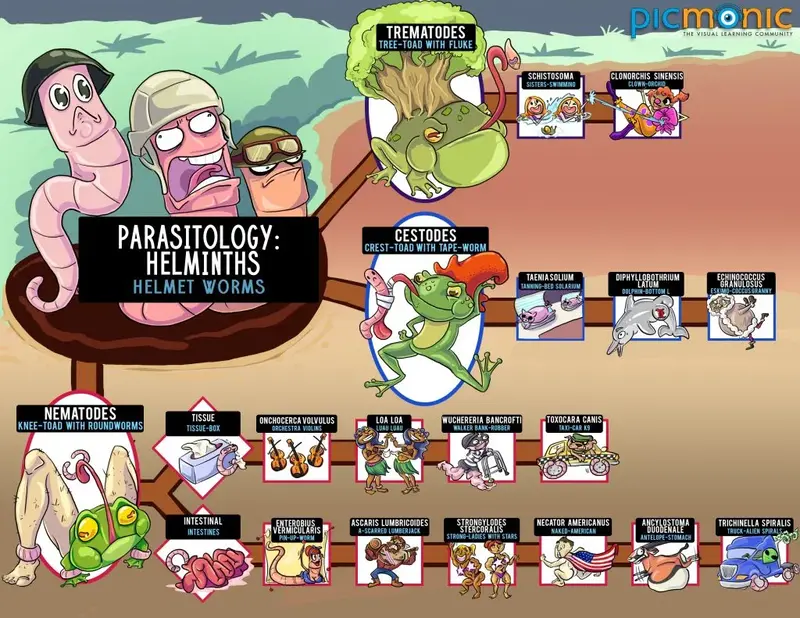There are many tiny creatures that live inside us and animals. Helminths, which are like worms, are very intriguing in the world of Parasitology. In this article and infographic, the different types of disease-causing Helminths will be explained.

What are Helminths?
Helminths are a group of parasitic worms that are known for their ability to infect and parasitize various host organisms, including both humans and animals. They can cause a wide range of diseases. Some examples of helminths include tapeworms, flukes and roundworms.
Types of Helminths
Helminths can be characterized into 3 main groups based on their phylum and characteristics. Each of these groups includes various species with unique characteristics. Here are some of the most common helminths:
Trematodes
Also known as flukes, these leaf shaped parasites can cause schistosomiasis, a disease that affects people in tropical and subtropical regions.
Cestodes
Also known as tapeworms, they have a ribbon like appearance. Examples of Cestodes include Taenia solium (pork tapeworm) and Taenia saginata (beef tapeworm), both of which infect humans through the consumption of undercooked meat.
Nematodes
Also known as roundworms, nematodes are characterized by their cylindrical elongated body shape and the presence of a complete digestive tract. Some examples include Ascaris lumbricoides and Trichinella spiralis.
Master and learn about Helminths by leveraging Picmonic’s visual aids and mnemonics. It can be a great valuable resource for anyone trying to understand this complex topic.













